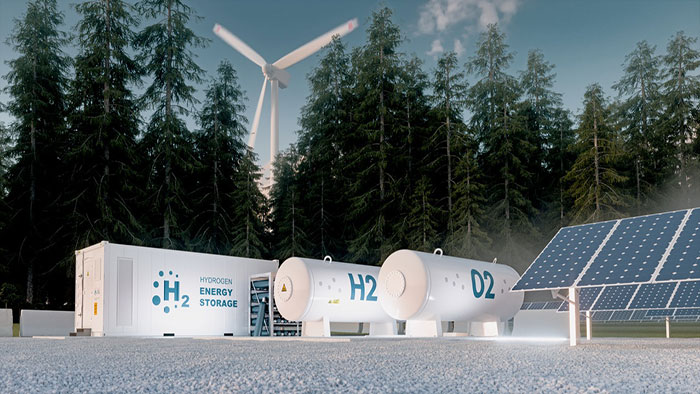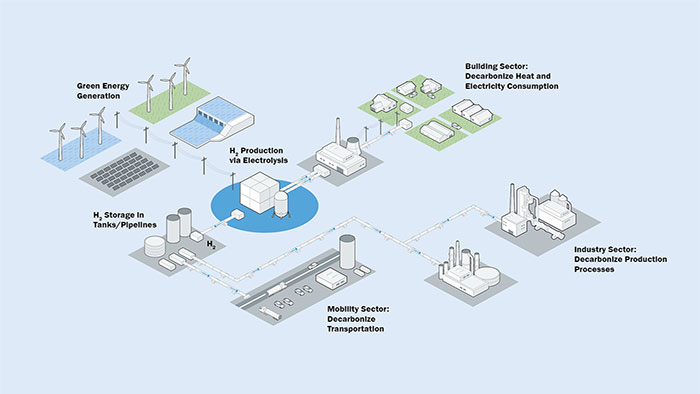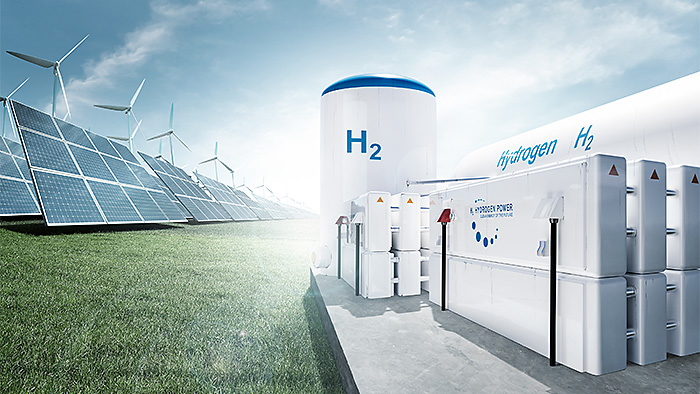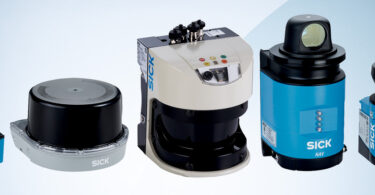How reliable measurement technology can facilitate the creation of environmentally-friendly hydrogen
Electricity from renewable sources is subject to strong fluctuations and cannot be stored. This requires numerous workarounds, including the use of green power to create hydrogen, which is transported and used via the natural gas network. This presents challenges to the infrastructure of the gas network and the measurement technology, as SICK has discovered as a partner in the energy revolution.

Electricity from wind, water, solar or biomass is essential for the energy revolution, but also presents some problems. The production fluctuates based on the weather conditions and is not calculable. It is currently difficult to store any excess electricity from solar and wind plants. The power-to-gas technology provides a solution to this. Water is split into oxygen and hydrogen by hydrolysis. Ideally, electricity from renewable sources is used for this, which is a perfect utilization of that electricity.
Hydrogen produced with green energy has a neutral carbon footprint, because its combustion produces primarily water vapor. Green hydrogen can be used in many ways, for example to power land vehicles, trains, ships, and aircraft, to produce synthetic fuel, in the steel and cement industries, as fuel for turbines or to heat buildings – the applications are nearly endless.
The power-to-gas concept plays a central role in responding to climate change, which is why it is currently undergoing extensive research.

Hydrogen in the gas network
In several regions in the world, up to ten percent hydrogen is currently being fed into the natural gas network. Scientists in Europe and Asia are investigating whether it would be possible in future to add up to 20 percent hydrogen to the natural gas.
The added hydrogen affects the properties of the natural gas. It changes its density, viscosity, explosivity, flow rate, and sound propagation speed. This presents completely new challenges for the pipes, compressors, seals, pipelines, valves, measurement technology, etc., which affects, the risk of leaks and explosions, and the determination of the calorific value. With this is in mind, gas network operators and gas suppliers are wondering what impact this will have on the performance of gas flow meters.
FLOWSIC600-XT reliably measures hydrogen
“In conjunction with experts at the DNV SE classification organization, we tested the effect of the added hydrogen on the ultrasonic technology of our devices. The existing devices already measure hydrogen containing natural gas as reliably and stably as natural gas without hydrogen,” said Strategic Product Manager Daniel Heinig. “The device can compensate for any measurement uncertainty – even in mixtures containing up to 10 percent hydrogen.”
It is possible that certain applications will become borderline due to the addition of hydrogen.
“We offer to our customers to check their FLOWSIC devices in their specific application and to give them a recommendation on what conversions are required to equip them for a higher hydrogen content in the natural gas in future,” Heinig said.
SICK even has a solution for a higher hydrogen content of up to 30 percent.
“We have developed a new ultrasonic probe which can already be optionally installed in the FLOWSIC600-XT product family. This probe is suitable for a wide range of applications and can measure very reliability and precisely over an even larger range,” said Product Developer Thomas Hegewald.
This has also been confirmed by the results of an independent public test performed by industry partners and in collaboration with the DNV SE. Already installed FLOWSIC devices can also be retrofitted with the new probe.
Turnkey gas flow measurement
Developing the probe presented some challenges to the team because hydrogen has very low density changes that impact the behavior of the sound wave in the gas mixture.
 “This results in a significant increase in the sound propagation speed, which makes the acoustic measurement more difficult because sound reflections can arise in the measurement device,” Hegewald said. “We solved this with a substantially narrower sound beam, which can suppress reflections from the sides and ensures a reliable measurement, even at small nominal diameters. The FLOWSIC600-XT gas flow meters are prepared for high hydrogen contents and are a futureproof investment for our customers.”
“This results in a significant increase in the sound propagation speed, which makes the acoustic measurement more difficult because sound reflections can arise in the measurement device,” Hegewald said. “We solved this with a substantially narrower sound beam, which can suppress reflections from the sides and ensures a reliable measurement, even at small nominal diameters. The FLOWSIC600-XT gas flow meters are prepared for high hydrogen contents and are a futureproof investment for our customers.”
Building on the FLOWSIC600-XT, SICK offers a turnkey gas flow measurement solution called FLOWSKID and a turnkey flow metering solution called FLOWRUN, where all aspects from the initial project management, installation, and servicing after commissioning have been tailored to one another.
Want to learn more about measurement technology? Contact a SICK representative today!





